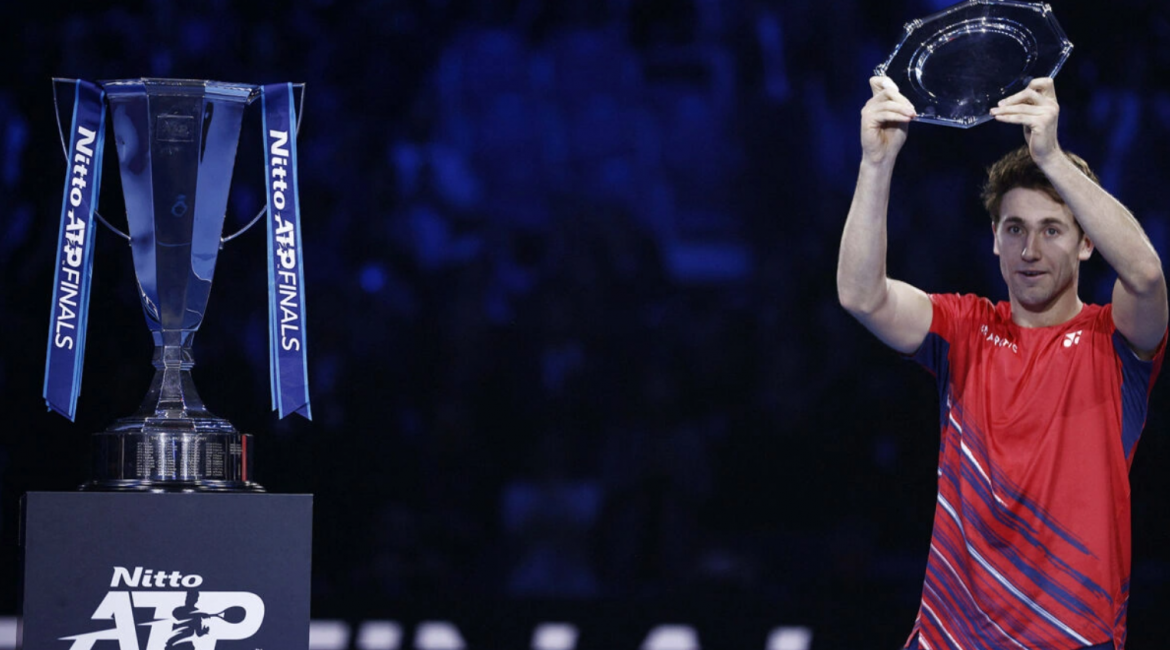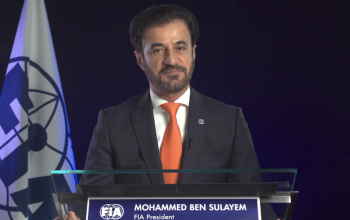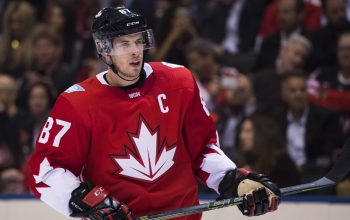Photo Credit: Tennis Majors
Casper Ruud spent 2022 as a perennial runner-up, but has yet to rise to the top
Vikram Nijhawan, Staff Writer
There’s a saying that “no one remembers the person who finishes in fourth place at the Olympics.” If Casper Ruud, a classy 24-year-old Norwegian tennis star, is remembered at all, it will likely be for flubbing a precious – and now fleeting – chance to finish first place.
With last year’s rankings in disarray, as a partial consequence of vaccination controversies and geopolitical turbulence, Ruud was one win away from becoming the World No. 1 at the U.S. Open. The only thing standing in his way: another rising star experiencing a breakthrough season, the Spanish prodigy Carlos Alcaraz Garfia. Ruud lost the final match in four sets, and his consolation prize was a short-lived spot as ‘World No. 2.’
Coming up just short was the theme of Ruud’s 2022 season, who came one match away from clinching big titles on three occasions – two Grand Slams, and the tour-end finals – only to lose all of them.
A thirty-second scene from Netflix’s new tennis docu-series Break Point says it all. Before stepping out onto the Court Phillipe-Chatrier for the 2022 Roland Garros final, Ruud’s opponent and life-long idol, Rafael Nadal – the greatest clay court tennis player in history – begins his intimidating, martial warm-up routine in the hallway.
Ruud awkwardly begins stretching before the match, resembling a fish out of water. Or, as sports writer Matthew Futterman described the young upstart after Nadal trounced him in straight sets shortly after, “someone with really good seats for the match instead of an opponent.”
Like many European players, Casper Ruud came of age on clay. The son of Christian Ruud, a former pro who achieved a career-high ranking of No. 39, Ruud was groomed for tennis greatness from a young age. At eighteen, he rose to the top-ranked junior tennis player in the world. Now, he is perhaps Scandinavia’s most promising tennis player since the Swedish serve-and-volleyer and former World No. 1, Stefan Edberg.
Incidentally, the young Norwegian’s standout accolade from 2022 was the Stefan Edberg Sportsmanship Award, voted on by his peers. For almost two decades, the honour alternated annually between the sport’s two most beloved icons: the now-retired Roger Federer and Rafael Nadal.
Ruud breaking that streak may be his most impressive accomplishment from last season, and the etiquette he displayed on-court during the U.S. Open final illustrates just one reason why. Few players would concede a point to their opponent on a technicality during a match with such high stakes, yet Ruud did just that, endearing him to both Alcaraz and the audience.
But his admirable sportsmanship also reflects a fundamental obstacle preventing his rise to the very top of the sport: at best, deference to his competition and at worst, an inferiority complex that stands in his way of becoming one of the sport’s best.
In a generation of promising tennis talent, Ruud’s consistency and composure stand out. Although his game lacks firepower or big weapons, he has plenty of assets: baseline attrition, a heavy topspin forehand that often sends him airborne and the ability to blunt brute force like few others on the tour.
Ruud upset Canada’s own rising tennis star, Felix Auger-Aliassime, on home soil during the Montreal Masters last August, only letting his big-hitting opponent win three games throughout the entire match. He similarly dispatched the big-serving Matteo Berrettini – the 2021 Wimbledon finalist, known as the “hammer of tennis” – in straight sets en route to the U.S. Open final.
At the 2022 tour-end ATP finals, featuring the year’s top eight male players, Ruud advanced to the final, losing all but two of his matches, those against the sport’s two remaining all-time greats, Rafael Nadal, in the round-robin stage, and Novak Djokovic in the final. He spent the entire season displaying his potential to beat the sport’s greatest players – but without a killer instinct, may lack the potential to become one himself.
Ruud has yet to establish his dominance this year. Despite being the tournament’s second seed, he suffered an early defeat at last month’s Australian Open and now plans to take the rest of February off to prepare for the American hard court circuit in the Spring. He reached the final of the Miami Open last March, falling to Alcaraz – an unfortunate premonition of their eventual Flushing Meadows final. Whether Ruud will continue his rapid progress this year, or face stagnation, remains to be seen.
The young player’s career has just begun and he has plenty of time to dispel scepticism about his ability to perform on big stages. With next year’s summer Olympics taking place on the red clay of Roland Garros Stadium in Paris, perhaps Ruud has another chance to eschew that earlier locker-room awkwardness with an unflinching resolve to finish first on the podium – but not if he keeps playing like someone that no one expected to advance this far.




